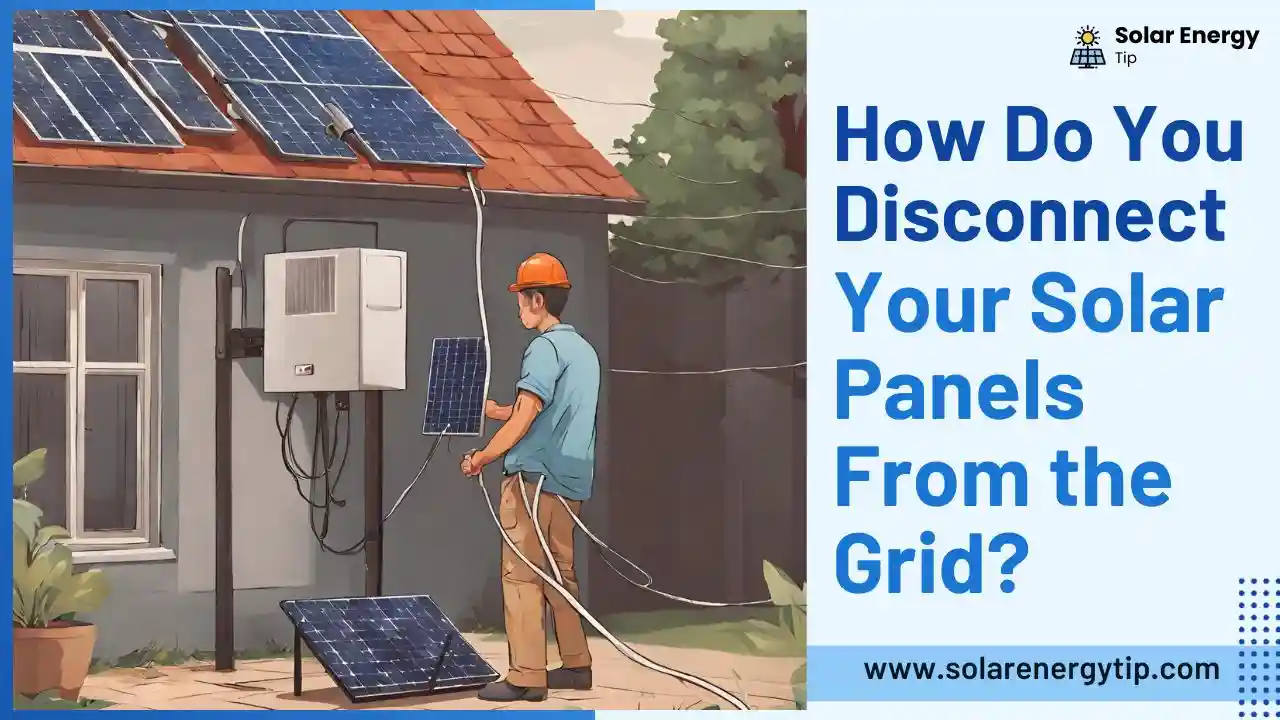As the United States moves toward sustainable energy, more homeowners choose solar panels.
However, solar panels require regular maintenance and repair, which may need disconnecting them from the grid. So you must be judging, “how do I disconnect my solar panels from the grid?”
The instruction booklet will walk you through disconnecting your solar panels from the grid.
Remember that improperly disconnecting solar panels from the grid might cause serious injury or death.
Electrical equipment requires that you and your family follow all safety rules.
This article will cover the tools and equipment needed and how to disconnect your solar panels from the grid securely.
Using this manual as a road map and following its recommendations, you may finish the task safely.
- How Do I Know If My System Is Connected To The Grid? ⚡
- How Do I Disconnect My Solar Panels From the Grid? 11 Steps Ultimate Guide
- Safety Guidelines for Solar Panel Disconnection From the Grid
- Reasons for Disconnecting Solar Panels from the Grid
- Where Can I Find More Information About Disconnecting My System From The Grid?
- Faqs
- Conclusion
How Do I Know If My System Is Connected To The Grid? ⚡
Before knowing how to disconnect my solar panels from the grid, it is important to know that my solar panel is connected to the grid.
Have you verified your grid connection? Let me know if you still require clarification. This text is essential to understand how your solar system works.
You’ll be relieved to learn that identifying whether your system is connected to the grid requires only a few basic steps.
These steps will reveal whether your system is grid-connected. This section will help you identify if you are linked to the grid.
Follow these three simple steps to quickly and easily determine if your system is grid-connected. If your system is not grid-linked, follow these instructions to check them.
Read More: For your shed solar power electrical outlets
How Do I Disconnect My Solar Panels From the Grid? 11 Steps Ultimate Guide
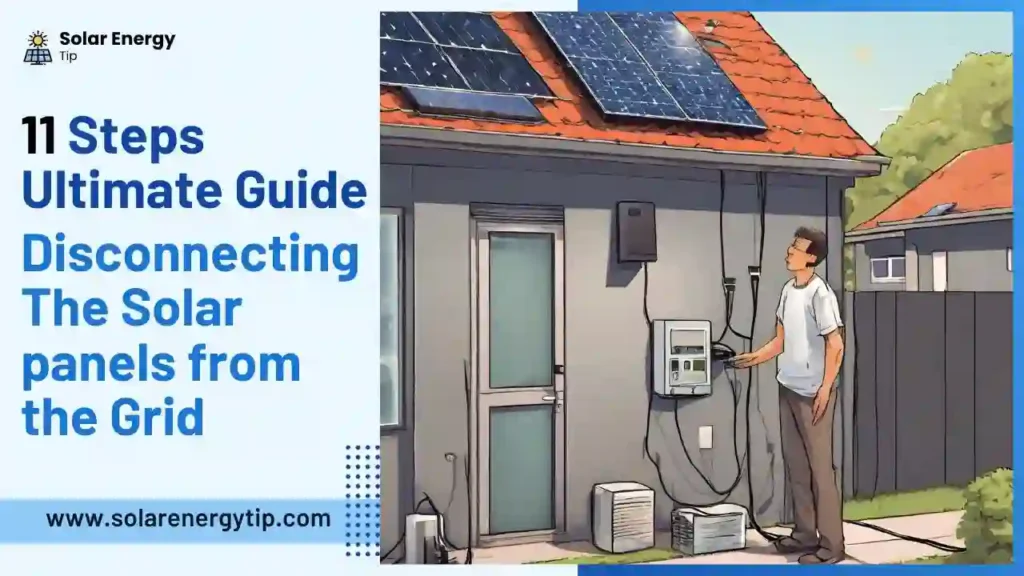
Caution: You should only attempt this if you have experience in it, as it entails working with electrical wire. If in doubt, get an experienced electrician.
You can safely disconnect your solar panels from the grid if you have the right tools and have done your study.
If you lack the essential knowledge and equipment. This 11-step complete guide will help you disconnect your solar panels from the grid.
Step 1: Inform the utility Company
First of all, when you disconnect your system from the grid, contact your utility to inform them.
And inquire about any requirements for this process.
Step 2: Understanding the Grid Connection
A grid-tied solar system is connected to the electrical grid, which can sell excess energy back to the utility company.
Before disconnecting your solar panels, it is important to understand the components involved in grid connection.
Solar panel grid connection includes inverters, meters, and utility connections.
It is also important to consider safety considerations such as turning off the main disconnect switch and using protective gear.
Step 3: Gathering Tools and Equipment
Disconnecting your solar panels from the grid and operating them independently requires a screwdriver, pliers, and wire cutters.
You only need these. If you follow these instructions in order, you should succeed. Before starting the activity, wear a hard hat, safety glasses, and gloves.
Taking this precaution prevents damage. Before disconnecting, verify that the AC and DC disconnects are off.
This update prevents solar panels from connecting to the grid and powering your home.
| Tool or Equipment | Description | See on Amazon |
|---|---|---|
| Insulated gloves and eye protection | Protect yourself from electrical shock. | See Offer |
| Voltage meter | Check for any remaining voltage in the system before disconnecting any components. | See Offer |
| AC and DC disconnect switches | Cut off the flow of electricity to the solar panels. | See Offer |
| Ladder or scaffolding (if necessary) | Provide safe access to the solar panel system. | See Offer |
Step 4: Turn Off the Ac Power Switch
After gathering the tools, start the disconnecting process.
Turn off the AC disconnect switch that connects the solar array to the grid. This process isolates the solar panels from the grid line.
Steps to isolate the solar panels from the grid.
- Step 1: Find the AC disconnect switch, a huge switch box with a lever or handle.
- Step 2: Open the metal door covering the switch lever.
- Step 3: Flip the AC disconnect switch lever to “OFF” using electrical safety PPE.
- Step 4: Ensure the switch is entirely off. It should be perpendicular to the switch box conduit.
- Step 5: Lastly, Close and secure the metal cover on the switch box.
Now, the solar panels are disconnected from feeding power into the grid lines.
However, the inverter may still receive DC electricity.
Next, turn off the inverter and unplug the home wiring from the grid.
If you need help finding or using the AC disconnect switch, let me know in the comment box.
Step 5: Turn Off the Inverter
A solar inverter converts DC electricity from solar panels into AC electricity that can power loads and input into the grid.
Now, disable this AC output, which converts from the inverter steps.
- Step 1: Open the outer and inner covers of your primary electrical panel.
- Step 2: Locate the solar inverter circuit breaker. It may be called an “Inverter,” “PV Inverter,” “Solar Inverter”, etc.
- Step 3: Verify that the inverter breaker leads to the output wires.
- Step 4: Completely turn off/open the inverter’s circuit breaker. Perpendicular to the breaker bar.
- Step 5: Check that the inverter’s status lights and indicators should no longer reflect power output.
- Step 6: At the end, Close and fasten the inner and outer cover on the electrical panel.
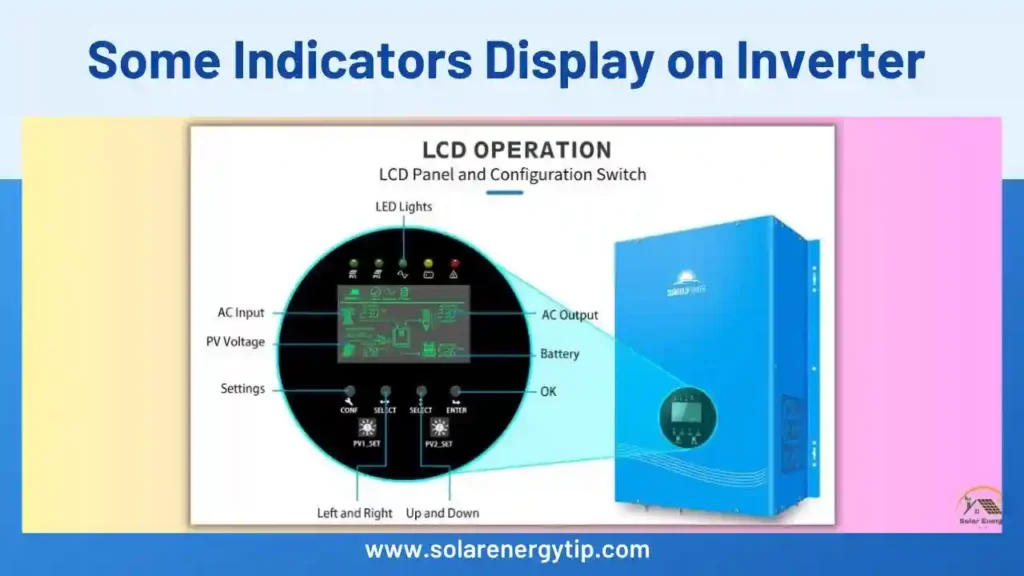
Finally, by turning off the inverter breaker, the inverter is disconnected from your home’s circuits and cannot produce solar-generated AC electricity.
Step 6: Switch the grid tie-breaker to Disconnect from Utility power.
To cut the tie to the utility grid, you’ll need to open up again your main panel and flip the switch for the grid tiebreaker to off.
That’s the breaker that links your home to the outside power lines. Switching it off disconnects your circuits from the utility supply.
Be super careful working inside the panel – safety first.
Once that breaker’s off, your home’s electrics stand alone from the grid.
Step 7: Install a Manual Transfer Switch
This is important for transferring circuits between grid and solar.
To manually switch between grid power and your solar panels, you’ll need to put in a transfer switch.
Just follow the instructions that came with it.
Basically, you wire the transfer switch between your home’s circuits, the solar system, and where the grid connection used to be.
Then, you can flip a switch to change between them. It lets you direct circuits to either utility power or solar power as needed.
You know that,
When you install the transfer switch, you take some electrical know-how, so go slow and be safe.
But once it’s in place, you’ll have seamless switching capability between the grid and the sun.
Step 8: Disconnect and Remove any Net Meter
If you had net metering, extra solar electricity could be sent to the grid. As you disconnect from the utility grid, you must remove this device.
- Find your utility’s net metering equipment. A bi-directional net meter may be on your home’s side or utility pole.
- Then, disconnect the solar array-net metering wiring. Detach conduit and wire terminals.
- After that, unmount the net meter, if possible. Otherwise, leave it unplugged and inoperable.
- Disconnect any net meter wiring at the utility pole. This may need an electrician.
- Discard any conduit or cable connecting the solar system to the net meter and utility pole.
Don’t forget to reach out to your utility company for help with the removal of net metering gear they installed.
Afterward, your solar system will be fully separate from the grid. If you need assistance locating any specific equipment, feel free to ask. 😊🌞🔌
Step 9: Final Grid Disconnect Verification
Before making the full switch to off-grid, test everything thoroughly, Turn circuits and appliances on to simulate normal use.
- Check that grid-tied loads shut off when the grid disconnects.
- Make sure essentials run fine just on solar-charged batteries at night.
- Monitor voltages and currents to catch any issues.
- Take your time testing to catch problems now, not later.
Don’t finalize the transition until you’re 100% sure your system works properly disconnected from the grid. Those tests guarantee a smooth off-grid shift.
Step 10: Install A Battery Back-Up System
Installing a battery backup system for your solar system ensures power if you disconnect from the grid.
Once your system’s disconnected from the grid, batteries become your power source in the dark.
Size your battery bank big enough to run essentials all night long.
A pro can help calculate your needs but plan for lights, fridges, medical devices, or other critical loads.
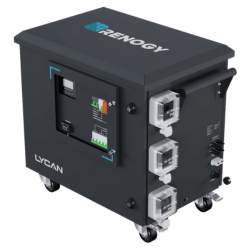
Portable Home Battery(LiFePO4)
- Huge 3500W AC Output,
- Plug Waterproof Housing,
- Home Backup,
- Emergency
Choose batteries suited for solar – like lithium-ion or deep cycle lead acid.
After buying your battery backup system, could you attach it to your solar panel system?
Install them securely and maintain them well, and they’ll keep your important stuff energized when the sun’s not shining.
Having the right battery setup is key to staying powered round-the-clock without the grid.
You’ll need safety switches to connect them properly. After connecting your battery backup system, disconnect your solar panels from the grid properly.
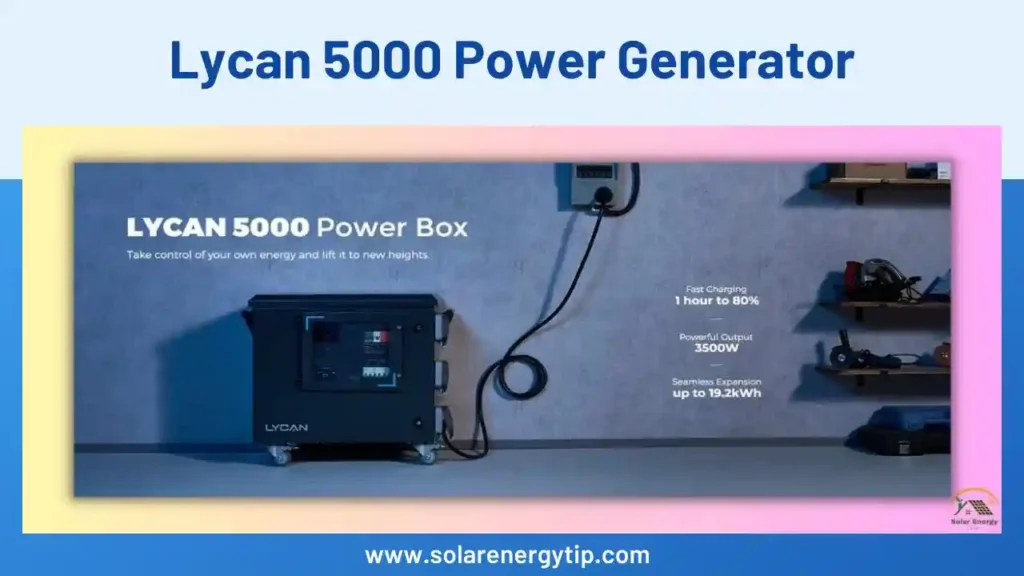
To work effectively, your equipment must be properly installed and linked.
Installing a solar panel battery backup system guarantees power when needed most.
Step 10: Documents the Process at last for Utility
My friend,
I suggest keeping a detailed record if you disconnect your solar panels from the grid.
Take photos of the wiring changes and keep any paperwork from the utility company or solar provider.
This documentation will be useful if you ever reconnect to the grid or when future owners take over the home.
Tracking your steps will make things easier down the road.
Safety Guidelines for Solar Panel Disconnection From the Grid
| Guideline | Description |
|---|---|
| Wear insulated gloves and eye protection | Protect yourself from electrical shock. |
| Always assume that your solar panels are live and generating electricity | Take appropriate safety measures to avoid electrical accidents. |
| Before unplugging any components, use a voltage meter to check for any leftover voltage in the system. | Ensure that the system is safely disconnected before working on it. |
| Never touch any cables or components unless you are certain that doing so is completely safe. | By taking caution and ensuring safety before handling any components, electrical dangers can be avoided. |
| Unless you have prior familiarity with electrical systems, avoid attempting to unplug your solar panels from the grid. | Make sure you have the abilities and information required to do the assignment securely. |
Reasons for Disconnecting Solar Panels from the Grid
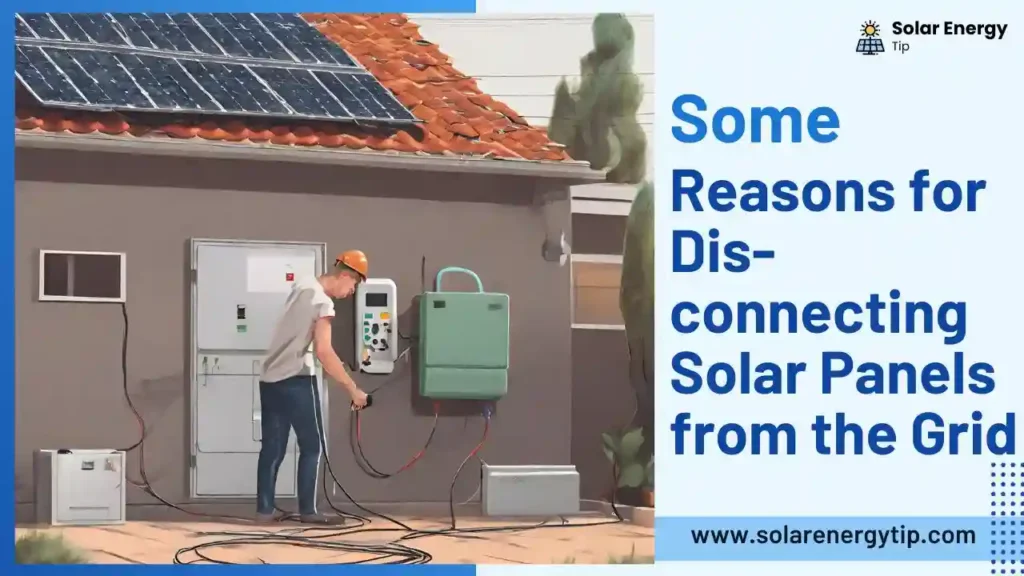
Disconnecting your solar panels from the grid may be necessary in several situations. This prepares you for any situation. These include:
Maintenance:
Solar panels need regular inspections and cleanings to operate efficiently and reliably. These checks and cleanings must be done frequently.
Before working on the panels, disconnect them from the grid to avoid electric shocks. This prevents shocks while working on them.
Repairs:
Disconnecting your solar panel system from the grid may be necessary to diagnose and fix it. Disconnecting solar panels from the grid prevents additional damage.
This technique prevents solar panel damage. Disconnect them from the grid to prevent further damage to the solar panels. It’s necessary.
Upgrades & Replacement:
Disconnect them from the grid to stay safe while upgrading or replacing solar panel system components.
You may upgrade or replace components without disturbing household electricity. Upgrade or repair your home’s electrical system without interrupting power.
Upgrade or repair your home’s electrical system without interrupting power. Upgrades and replacements are next.
Emergency Situations:
To avoid system damage or worker harm in a hurricane or earthquake, your solar panels may need to be unplugged from the grid.
This protects workers’ health and safety. Preventing injuries will ensure no one gets wounded while working on the system.
Go for an Off-Grid Solar System:
If you want to go for an Off-grid, then it is essential to disconnect the solar system from the grid.
But in this process battery backup system is a must for your electricity needs.
Where Can I Find More Information About Disconnecting My System From The Grid?
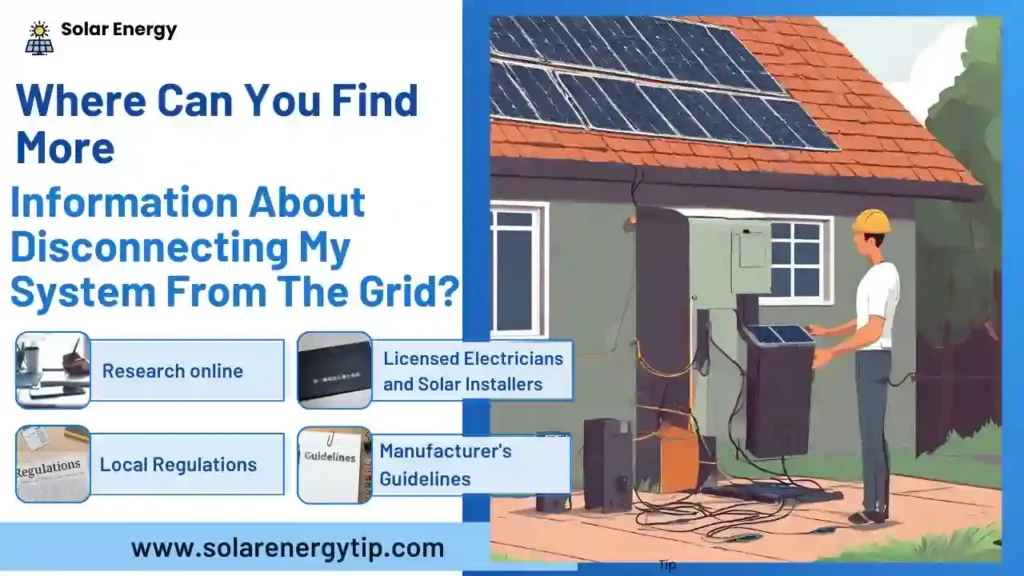
Disconnecting is complicated and involves local rules and regulations. You’re lucky that many services can help you.
Research online:
Disconnecting from the grid is a terrific method to save money and control energy use. Research and preparedness will get you off the grid.
Many websites provide grid-disconnection information and offer step-by-step instructions for removing solar panel systems from the grid. Find detailed articles, videos, and tutorials.
Read up on local disconnecting-from-grid legislation. Understand local laws to stay compliant.
The Solar Energy Technologies Office, National Renewable Energy Laboratory, and Solar Energy Industries Association are reliable sources.
Local Regulations:
Local energy providers and government authorities can also help. They can help you disconnect from the grid or answer your queries.
Licensed Electricians and Solar Installers:
Solar panel system installers or electricians with solar panel installation experience should be consulted.
They can help you unplug your system from the grid and ensure you’re following safety rules. They can also verify your compliance. They can also check your safety compliance.
Manufacturer’s Guidelines:
You should consult your solar panel system manufacturer for information on disconnecting from the grid.
Request instructions from your solar panel system manufacturer. Your system’s user handbook should have these instructions.
You can also search the system manufacturer’s website.
Faqs
Can I disconnect my solar system from the grid?
Yes, you can disconnect a grid-tied solar system but it requires installing batteries and reconfiguring the system for off-grid use.
How do I disconnect my house from the power grid?
Notify your utility, install a cutoff switch between the house and the grid, set up off-grid power like solar/batteries, and have a licensed electrician do the final disconnection.
Is it possible to go off the grid?
Yes, going off-grid is possible with careful planning, energy assessment, and installing alternative power sources.
When should solar panels be removed?
Solar panels survive 25–30 years or more with little maintenance. Solar panels should be removed when they are damaged beyond repair or no longer producing sufficient energy to justify the cost.
Why do people remove solar panels?
People remove solar panels if damaged, underproducing, upgrading system, moving, or dissatisfied with maintenance/performance.
Can I install solar and not connect to the grid?
Yes, you can install solar panels and batteries for off-grid use without connecting to the electrical grid.
What are the methods for off-grid power?
Solar panels, wind turbines, generators, and batteries are common methods for generating and storing off-grid electricity.
Conclusion
Disconnecting your solar panels from the grid requires caution and attention to detail.
This article explains how to disconnect your solar panels from the grid for maintenance or repairs. This technique requires safety precautions.
Before disconnecting your solar panels, double-check that the grid is off.
Knowing when to disconnect and reconnect your solar panels to the grid will help you keep them working properly and safely. When needed, do this.

